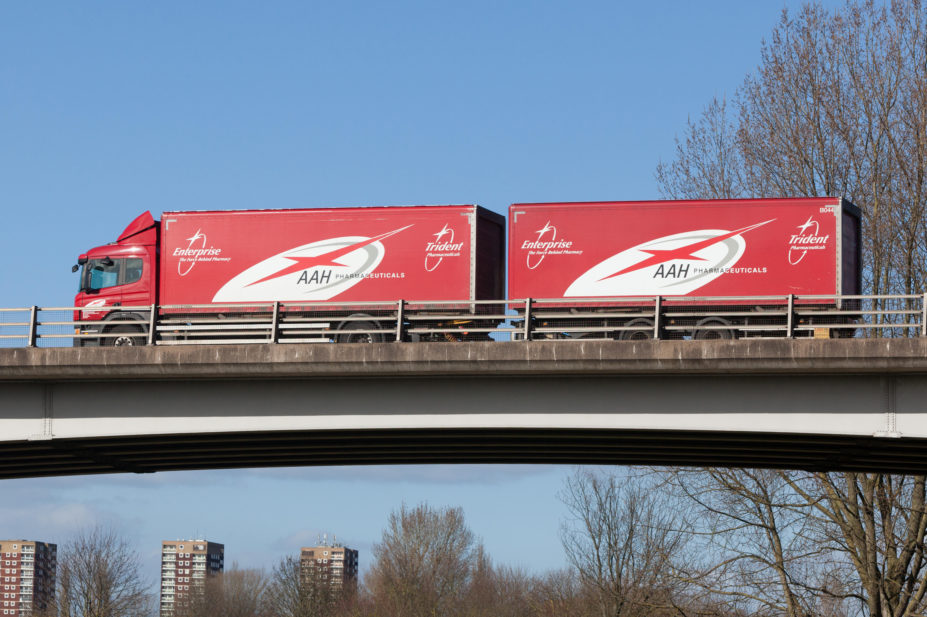
Chris Gibson / Alamy Stock Photo
The warning lights have been flashing on the UK’s medicines supply system for almost a year now.
In February 2022, pharmacy negotiators reported that pharmacists were “reporting problems obtaining more and more drugs” and raised the issue with the Department of Health and Social Care (DHSC).
The problem persisted and, by July 2022, more than half of pharmacists (54%) responding to a survey carried out by The Pharmaceutical Journal said that medicine shortages were now putting patient safety at risk.
Shortages of important medicines, such as alendronic acid, aripiprazole, alteplase, semaglutide and dulaglutide, threatened to increase medication errors and leave patients without potentially life-saving medication.
By September 2022, amid record numbers of price concessions granted to pharmacists purchasing medicines at soaring costs, the Pharmaceutical Services Negotiating Committee warned that the system was “no longer working”, with some price concessions only granted by the government on the last day of the month, leaving pharmacists scrambling to source reasonably priced medicines while still balancing their financial books in the meantime.
As these problems mount, adding to already rising pressures on the NHS, what are the root problems behind the shortages and how can they be fixed? Here are four potential solutions.
1. Reduce tax rates on medicines
Drug manufacturers are complaining about rising costs that make the UK, in particular, unattractive to do business in. This is for a good reason because any manufacturers signed up to the 2019 voluntary scheme for branded medicines pricing and access (VPAS) are about to have their tax rates hiked by five times in 2023.
VPAS is designed to ensure that the NHS branded medicines bill does not grow by more than 2% in a year, with any additional profits made by selling certain medicines — including branded generics — to the NHS, subject to a variable rate of government taxation. In 2022, this increased significantly from 5% in 2021 to 15%. The levy is expected to increase again to 26% in 2023.
“So, if it’s a branded generic that’s subject to VPAS — and therefore the margin on that product in the UK is extremely slim — and there’s a finite amount of stock, then global headquarters of shareholder-owned companies are going to prioritise other countries over the UK if they make a negligible margin in the UK as a result of the VPAS rate,” explained Mark Samuels, chief executive of the British Generics Manufacturing Association (BGMA).
“That combination of factors all makes it a very unhelpful situation in terms of medicine supply for the UK.”
However, removing price controls could substantially increase the NHS drugs bill and there have been several high-profile cases where manufacturers have been accused of “price-gouging” branded generics to make money.
Experts also point out that medicine price controls of various sorts are in place “across Europe, one way or another”, says David Taylor, emeritus professor of pharmaceutical and public health policy at University College London’s School of Pharmacy.
“It’s only really in [the United States] that you’ve got free pricing.”
2. Prioritise medicines imports
There are many causes for medicines shortages, but the UK is just one small part of the global drugs market. For instance, while a quarter of the UK’s generics are manufactured within the UK, a similar amount is shipped in from continental Europe and about a third come from India.
Richard Greville, distribution supply chain director at the Association of the British Pharmaceutical Industry, says there have been a myriad of factors “exacerbated by the wider economic impacts of the pandemic”.
“There are problems getting raw materials, manufacturing or logistical issues, unexpected demand or combinations of these,” he explains.
Samuels said part of the distribution problem for generics manufacturers, which make four in five medicines supplied to the NHS, was around obtaining shipping containers for medicines “coming into the UK”, particularly from India, owing to challenges faced by the shipping industry during the COVID-19 pandemic.
“There’s been a global shortage of shipping containers, and a challenge with shipping containers, not necessarily always being in the right parts of the world,” he said.
He has one suggested solution: “Medicines get no particular priority when it comes to shipping. There’s no preference to medicines over somebody shipping in a container full of socks [for example].”
However, even when the drugs get to the UK, there are problems with distribution, mainly relating to a lack of workforce. Wholesalers are bearing the brunt of “labour resource cost challenges globally”, says David McNicol, head of pharmacy sales at AAH Pharmaceuticals, speaking at an event for members of the Association of Independent Multiple Pharmacies in September 2022.
“We also have workforce pressures,” he said. “I won’t shy away from the challenges we have in getting really good drivers, as others are offering more money and attracting them.”
But he added that the wholesaler is also being affected by distribution issues farther up the supply chain. “When we order something, it’s either not coming, or if it comes, it’s not in the quantity we expect it to, and consequently, we have to work very hard around [that].”
3. Quicker market authorisations
Generic medicine manufacturers are also citing worsening delays in marketing authorisation approvals by the Medicines and Healthcare products Regulatory Agency (MHRA) as a reason for supply chain fragility.
A survey of BGMA members found that 82% of applications are taking between 18 months and 2 years, “which is a considerable delay and way longer than used to be the case”, said Samuels.
“If it takes two years to assess and approve new generics coming on to the market, then during that two-year period, there [could be] only one supplier [of a product],” he adds.
Similarly, Gerry O’Brien, director of OBG Pharmaceuticals, said the MHRA’s ‘sunset clause’ is making it more difficult for manufacturers to respond to shortages.
The ‘sunset clause’ — set out in European law and adopted by the UK after Brexit — means a manufacturer will lose its marketing authorisation for a medicine if the drug “ceases to be placed on the market in the UK for a period of three consecutive years”.
“We lost a lot of licences because we weren’t manufacturing [the products],” O’Brien told The Pharmaceutical Journal.
“After three years of the products not being manufactured, but in the market, the licence is lost. So that reduces the number of people that potentially can respond whenever there’s a [supply] issue.”
As of August 2022, manufacturers have reported 1,665 potential discontinuations through the government’s discontinuations and shortages (DaSH) portal, which opened in October 2020. This will include the discontinuation of liquid selective serotonin reuptake inhibitor paroxetine (Seroxat; GSK) 20mg/10mL oral suspension, which was announced by GSK in July 2022 following “broader strategic review” of the paroxetine product family and raised concerns for patients in the process of tapering off the drug.
In the case of a medicine supply issue, the ‘sunset clause’ means that alternative options are harder to find. However, Laura Squire, chief healthcare quality and access officer at the MHRA, said that when there is an actual or potential drug shortage, “we expedite the assessment of critical products, liaising with the DHSC as appropriate, to avoid an impact on public health”.
“One of our key goals is to continue reducing the time it takes to license generic products review of our licensing procedures, a range of short-term mitigating actions are in place to improve our service delivery, as well as longer-term initiatives to reshape our processes and to rebuild capacity,” she added.
“We are engaging with trade associations as part of these processes. As a result, we are currently processing much higher volumes of products without increasing waiting times.”
4. Faster action on supply issues
There have been a clutch of wider problems with drug manufacturing that have affected the global medicines supply chain.
For example, in June 2018, regulators recalled thousands of batches of valsartan-containing products that were found to be contaminated with carcinogenic N-nitrosodimethylamine (NDMA), with the affected products detected during inspections of two factories in China.
Problems around drug contamination persist, with Sanofi recalling all batches of the antipsychotic Stemetil (prochlorperazine maleate) 5mg/5mL syrup as a precautionary measure in October 2022, owing to the identification of carcinogen N-nitrosomethylphenylamine (NMPA) above the acceptable limit. This led to an immediate discontinuation of the product and notification of an upcoming supply issue for Stemetil 12.5mg/mL solution for injection ampoules.
Meanwhile, uplifts in demand have also contributed to destabilising the supply chain.
In 2015, guidance published by the National Institute for Health and Care Excellence (NICE) started an uptick in HRT prescribing, which has since ultimately doubled from 238,000 items in January 2017 to 538,000 items in December 2021. The guidance encouraged more GPs to prescribe HRT as first line treatment for patients aged under the age of 60 years who experience menopausal symptoms, such as joint pain, low mood or sexual difficulties. This, combined with more patients being given longer-term prescriptions, has created a demand for the drugs that manufacturers are still struggling to match. As of 28 October 2022, there were 12 serious shortage protocols in place for HRT drugs, allowing pharmacists to dispense a different product without consulting the patient’s GP first.
Demand spikes were also reported to be behind shortages of thrombolytic drugs alteplase and tenecteplase, which experienced supply problems in August 2022. Manufacturer Boehringer Ingelheim blamed stock issues on a combination of “increased global demand and the challenging manufacturing process”.
Meanwhile, Gaviscon Infant (magnesium alginate + sodium alginate) is facing an active ingredient shortage, which is currently experiencing supply problems. Its manufacturer Reckitt told The Pharmaceutical Journal on 14 October 2022 that “poor weather conditions and low harvest yields” of a particular algae in Norway were impacting the manufacturer’s incoming supply of the active ingredient sodium alginate.
“This is an issue impacting the whole industry, including in the UK,” they said.
In the face of these shortages, pharmacists have often struggled to obtain timely advice from the NHS on how they can help switch patients to alternative medicines if needed, describing it as “very frustrating” that the government was further behind other countries in implementing measures to mitigate glucagon-like peptide-1 receptor agonist shortages, for example.
Manufacturers have reported a similar issue and are disappointed in the government’s investment in medicines resilience.
“During the pandemic we ran out of PPE, we had a shortage of ventilators, but we didn’t have any significant shortages of generic medicines because everybody pulled together with a wartime spirit to make sure that the supply chain was resilient. And it’s disappointing that the government has not put resources into medicines resilience,” said Samuels.
“The DHSC has a really excellent medicines resilience team. They are battle hardened because of the pandemic, but I’m uncertain that they’ve got the resources they need now that the pandemic has quietened down and that would be a mistake, if that’s the case,” he said.
The DHSC has countered this, with a spokesperson saying: “We have well established procedures to deal with medicine supply issues and work closely with industry, the NHS and others to help prevent shortages so that patients continue to have access to the medicines they need.”
They added that shortages can occur owing to manufacturing difficulties, regulatory problems, problems with the supply of raw materials, sudden demand spikes or from issues that are related to the distribution of the product.


